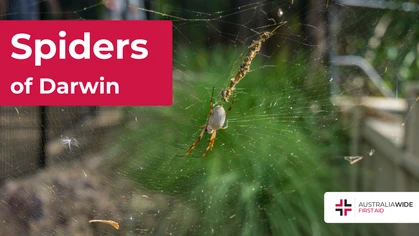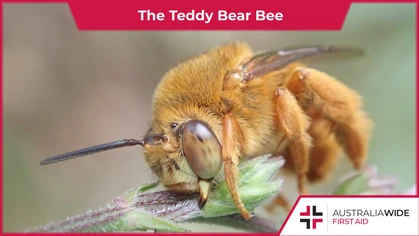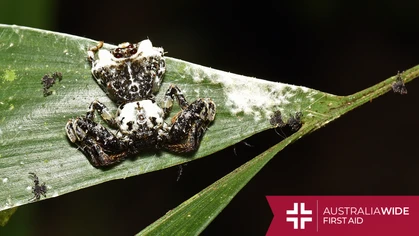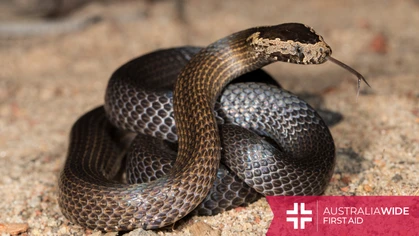First Aid for a Cat Bite

Bites and Stings
 Cat bites, while often underestimated, can lead to serious health complications if not treated promptly and properly. Cats' mouths harbour a variety of bacteria that can cause infections in humans.
This guide provides step-by-step instructions on how to administer first aid for a cat bite and when to seek professional medical help.
Cat bites, while often underestimated, can lead to serious health complications if not treated promptly and properly. Cats' mouths harbour a variety of bacteria that can cause infections in humans.
This guide provides step-by-step instructions on how to administer first aid for a cat bite and when to seek professional medical help.
Understanding the Risks
Cat bites are usually only minor injuries – they often do not cause gaping wounds. Unfortunately for us, cat teeth are extremely sharp, thin, and long. This means that when a cat does bite, the puncture wounds can be very deep. Couple this with the plethora of bacteria found in a cat mouth, and it can be a recipe for disaster. Cat bites can inject bacteria deep into tissues, making bacterial infections a common and serious concern. Common bacteria found in cat bites include Pasteurella multocida, Staphylococcus, and Streptococcus species. Infections from cat bites can develop quickly, often within 12-24 hours. However, people who have sustained deep cat bites often don’t present for medical attention until after 24 hours, by which time the infection is well established. About half of all people who present to an emergency department with a cat bite already have an infection, with up to 80% of all cat bites becoming infected. If left untreated, an infected cat bite can lead to ICU admission, amputation, even a chance of death.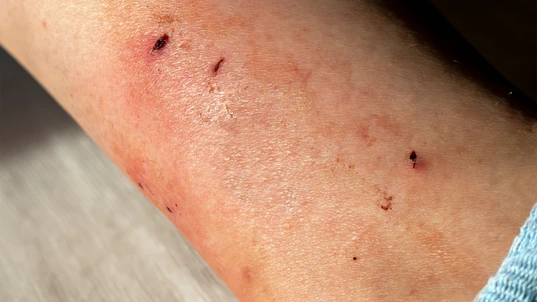
Wash all cat bites, then seek medical attention if they are deep.
First Aid for a Cat Bite
Assess the Situation Stay calm and ensure your safety. Remove yourself from the area where the cat is, or if the cat is aggressive, contain or isolate the animal to prevent further injury. Immediate Cleaning Wash your hands thoroughly before touching the wound. Rinse the bite area under running water for several minutes. Avoid using high pressure as it can further damage the tissue. Use mild soap to gently clean around the wound. Control Bleeding If the wound is bleeding, apply gentle pressure with a clean cloth or sterile gauze for 15 minutes. Elevate the affected area to help reduce blood flow and swelling. Bandage the Wound Cover the bite with a sterile bandage or dressing to keep it clean. Change the bandage at least once a day or whenever it becomes wet or dirty. Monitor for Signs of Infection Keep an eye on the wound for any signs of infection, such as increased redness, swelling, warmth, pus, or worsening pain. If any of these signs develop, seek medical attention immediately.
Cat bites can show signs of infection within 12-24 hours.
When to Seek Professional Medical Help
Deep or Severe Bites: If the bite is deep, severe, or involves the face, neck, hands, or joints, seek medical attention immediately. Signs of Infection: If you notice any signs of infection, such as increased redness, swelling, warmth, or discharge, consult a healthcare provider promptly. Tetanus Vaccination: If you haven't had a tetanus shot in the past five years, you may need a booster. Fever or Malaise: If you develop a fever, feel unwell, or experience chills, it may indicate a systemic infection that requires medical treatment. Underlying Health Conditions: Individuals with diabetes, compromised immune systems, or other health conditions should seek medical advice following a cat bite, as they are at higher risk for complications.
Elderly people and those with compromised immune systems are at greater risk of infection from a cat bite.
Preventing Cat Bites
Understanding Cat Behaviour: Learn to recognise signs of fear or aggression in cats to avoid situations that may lead to biting. Proper Handling: Always handle cats gently and respectfully. Avoid sudden movements or loud noises that can startle them. Training and Socialization: Properly socialised cats are less likely to bite. Encourage gentle play and reward non-aggressive behaviour.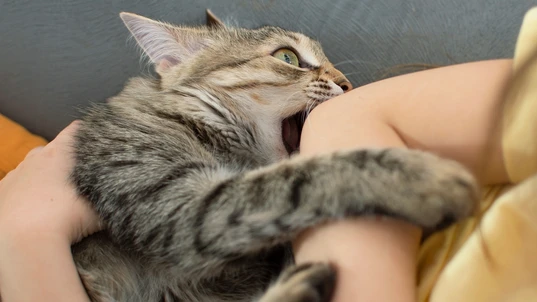
Learning to interpret cat behaviour can help you to avoid bites and scratches.
Conclusion
Cat bites should never be taken lightly due to the risk of serious infections. Prompt and proper first aid can significantly reduce the risk of complications. Always monitor the wound for signs of infection and seek professional medical help when necessary. By understanding the risks and taking appropriate precautions, you can help ensure your safety and the well-being of your feline companion.
Originally published at
https://www.australiawidefirstaid.com.au/resources/first-aid-for-a-cat-bite
as part of the Australia Wide First Aid Articles Library
